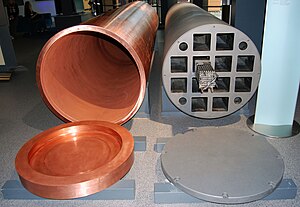Researchers at Michigan State University have unraveled the mystery of how microbes generate electricity while cleaning up nuclear waste and other toxic metals.
Details of the process, which can be improved and patented, are published in the current issue of the Proceedings of the National Academy of Sciences. The implications could eventually benefit sites forever changed by nuclear contamination, said Gemma Reguera, MSU microbiologist.
“Geobacter bacteria are tiny micro-organisms that can play a major role in cleaning up polluted sites around the world,” said Reguera, who is an MSU AgBioResearch scientist. “Uranium contamination can be produced at any step in the production of nuclear fuel, and this process safely prevents its mobility and the hazard for exposure.”
The ability of Geobacter to immobilize uranium has been well documented. However, identifying the Geobacters’ conductive pili or nanowires as doing the yeoman’s share of the work is a new revelation. Nanowires, hair-like appendages found on the outside of Geobacters, are the managers of electrical activity during a cleanup.
“Our findings clearly identify nanowires as being the primary catalyst for uranium reduction,” Reguera said. “They are essentially performing nature’s version of electroplating with uranium, effectively immobilizing the radioactive material and preventing it from leaching into groundwater.”
The nanowires also shield Geobacter and allow the bacteria to thrive in a toxic environment, she added.
Their effectiveness was proven during a cleanup in a uranium mill tailings site in Rifle, Colo. Researchers injected acetate into contaminated groundwater. Since this is Geobacters’ preferred food, it stimulated the growth of the Geobacter community already in the soil, which in turn, worked to remove the uranium, Reguera said.
Bookmark this page for “Microbes Generate Electricity” and check back regularly as these articles update on a very frequent basis. The view is set to “news”. Try clicking on “video” and “2” for more articles.








